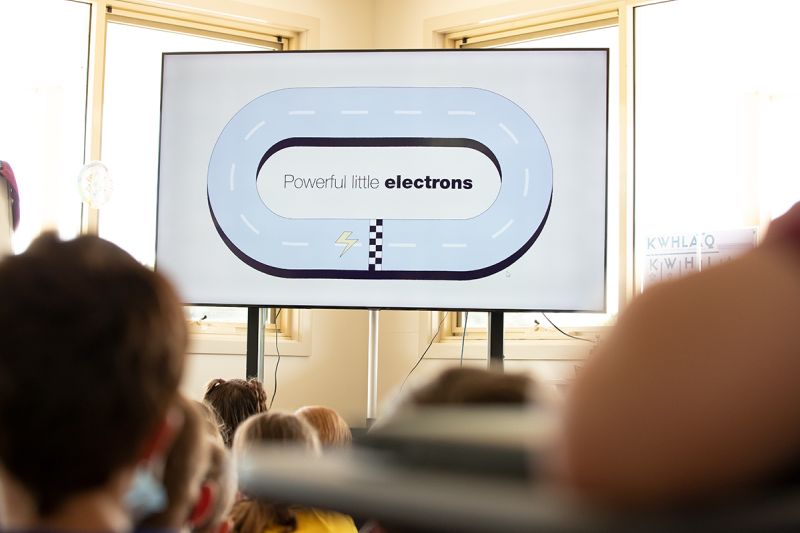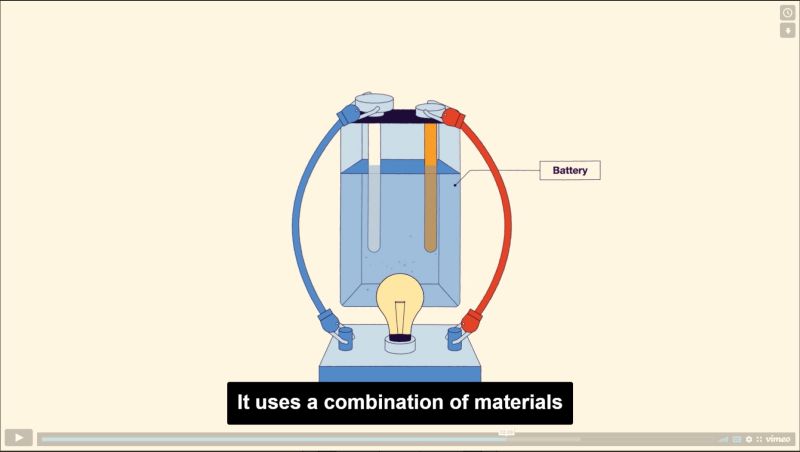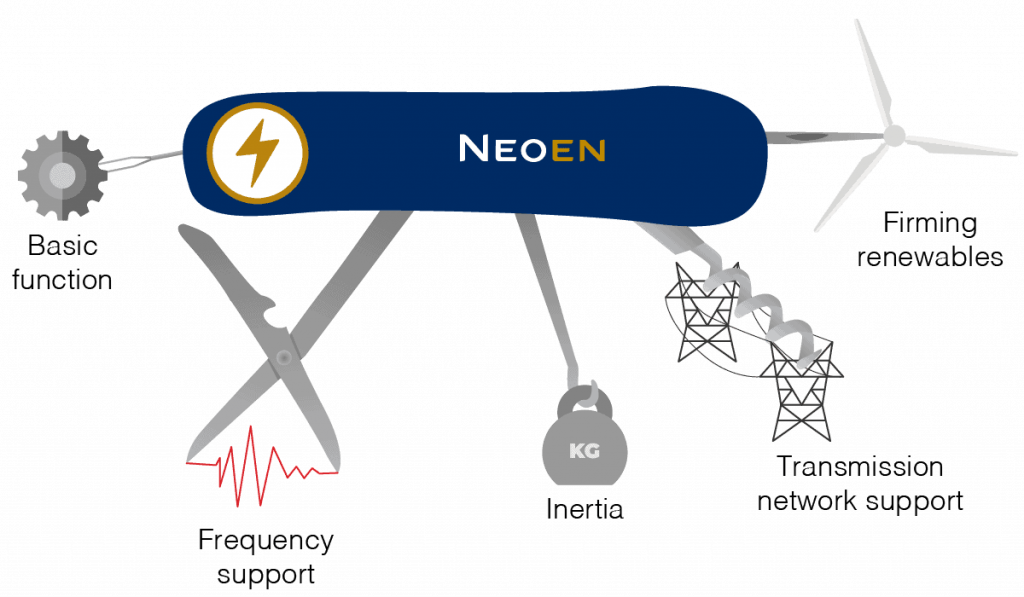Learn
We have developed a Learning Hub to support local schools with curriculum-linked content about electricity and renewable energy.
Take a look at the stand-alone website which features videos, interactive game & lesson plans for upper primary & lower secondary students.
neoenlearning.com
What does a big battery do?
Ever wondered what a big battery does?
Neoen and AusNet have made a wonderful animation that explores the many abilities of a grid-scale or big battery and the role they play in supporting the clean energy transition.
Basic Function
When there is excess energy, the battery will charge. When there is high demand for energy, the battery will discharge.
Frequency support
To maintain the stability of the system, the grid has frequency control. The battery discharges electricity in response to frequency changes. The battery will also add competition to the market which helps reduce consumer electricity prices, helping to reduce electricity costs.
Virtual Inertia
As with vehicle suspension on an uneven road, inertia services are essential for stabilising the grid. A big battery can enable the advanced power inverters to emulate the existing inertia services being supplied by an ageing fleet of fossil fuel power plants. This service is currently being trialled at Hornsdale Power Reserve.
Network support
Grid-scale batteries can provide dynamic warp-speed responses so existing transmission lines can operate at full capacity. Like adding another lane to a freeway, the battery can unlock additional capacity on existing transmission networks – saving customers millions of dollars in expensive transmission line upgrades.
Firming renewables
Along with wind and solar technologies, large-scale batteries help to firm variable renewable energy. Batteries are an essential component in the stable transition to clean electricity and achieving emissions reduction targets.
Firming renewables
The battery will trade on the National Electricity Market (NEM).
This capacity is being used to store power from the grid when demand is low and dispatch it when demand is high, reducing the need for expensive gas ‘peaking plants’ and placing downward pressure on power prices.
Batteries are an essential component in the stable transition to clean electricity and achieving emissions reduction targets.
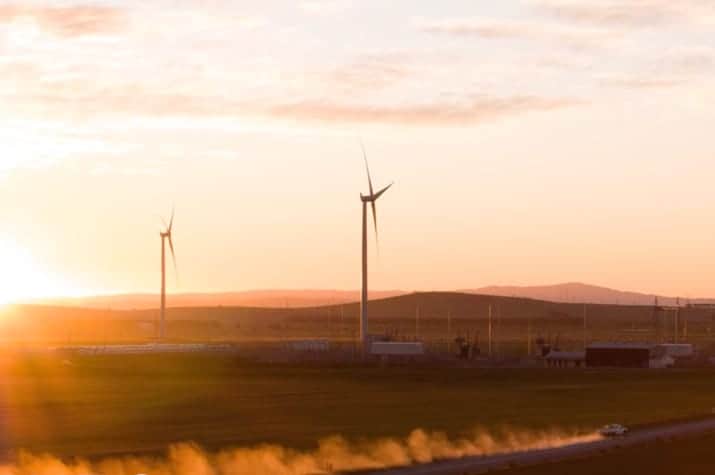
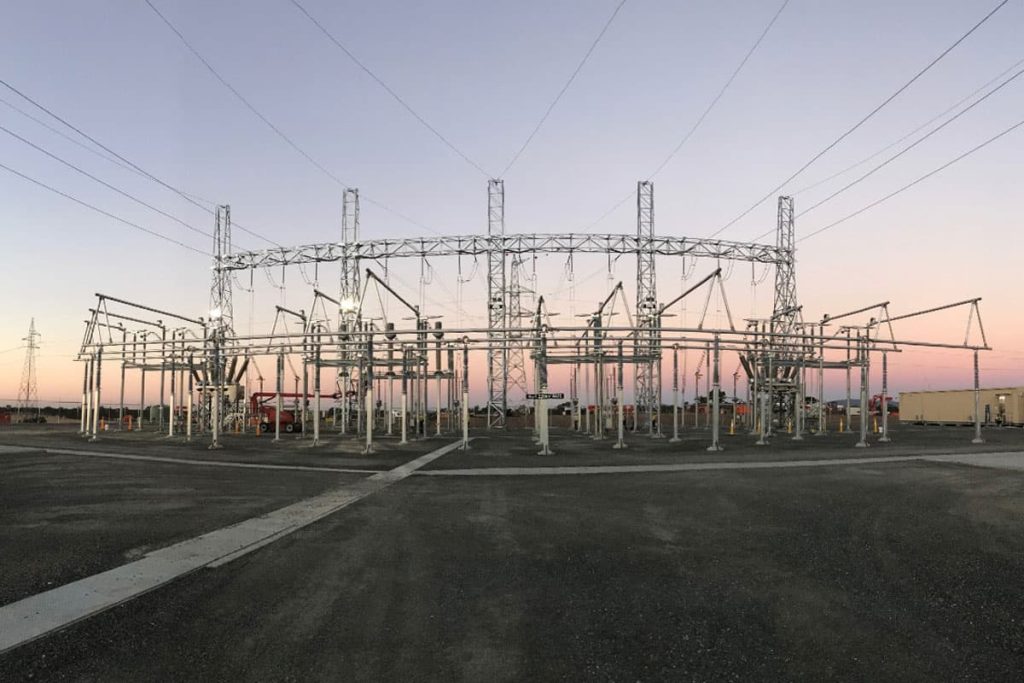
Frequency Control
The battery can help to stabilise the grid through providing frequency control services. Frequency Control Ancillary Services (FCAS) is a system in the National Electricity Market that helps maintain the power system at the right frequency, namely 50Hz.
If the frequency goes outside a close operating band, the power system will face significant issues, potentially leading to complete blackouts.
For instance, if power generation rises, the frequency will rise. Similarly, if electricity demand increases, frequency decreases.
Therefore, demand and supply need to be permanently equal in order to keep the frequency as close to 50Hz as possible. It is AEMO’s responsibility to manage this through the FCAS markets.
Case study: SA Big Battery
Neoen’s Hornsdale Power Reserve aka SA’s Big Battery is a 150 MW battery located next to Hornsdale Wind Farm near Jamestown in South Australia. Launched in 2018 and delivered in partnership with Tesla, it was the world’s first big battery.
In its first two year’s of operation HPR reduced costs by over $150 million for SA energy consumers – these reports provide more details:

© 2025 Neoen
Acknowledgement of Country artwork: ‘Celebrating Renewal’ by Teho Ropeyarn, 2022
